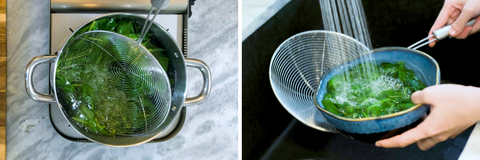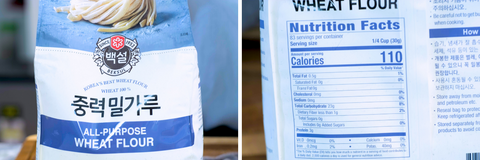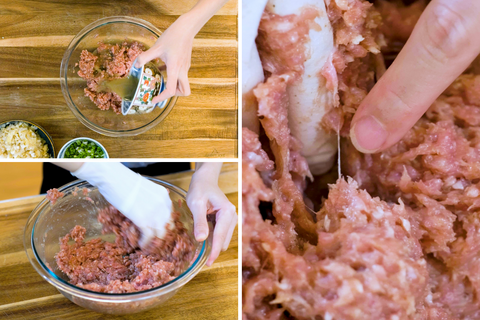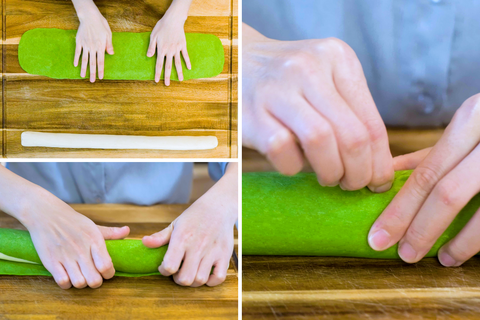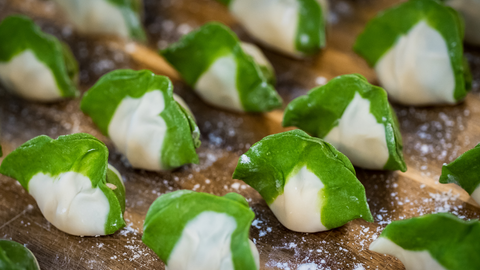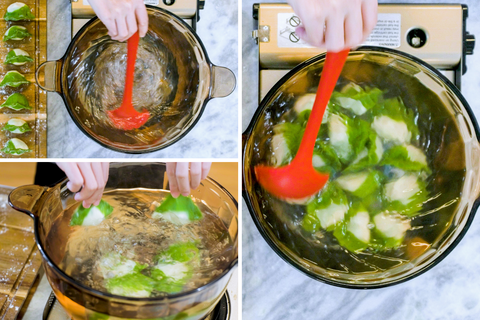THE ART OF DUMPLINGS – Jade Cabbage with Prok Filling (翡翠白菜饺子)
Rated 5.0 stars by 2 users
Feicui (翡翠) means jade; Baicai (白菜) is Chinese cabbage. These two words together are referring to the Chinese ornament - a cabbage carved out of jade. The dumplings that we are making today have a jade color, a pork cabbage filling, and a cabbage shape; that is how it got the name. This is a recipe that represents wealth. My family always makes it during the spring festival to wish them good fortune for the new year. I am super happy to share it with you.
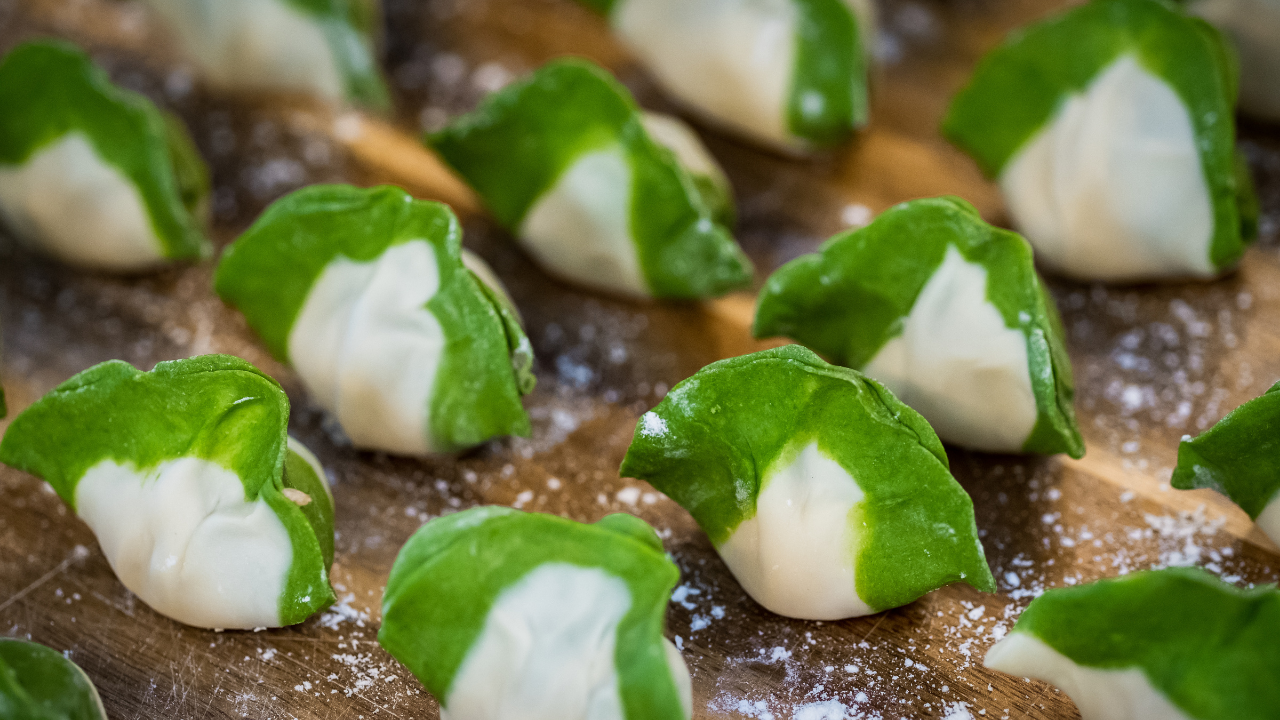
Ingredients
Ingredients for the White Dumpling Dough
- 300 grams of high protein content flour Such as dumpling flour, bread flour, noodle flour
- 150 grams of room temperature water
- 1/3 tsp 2 grams of salt
Ingredients for the Green Dumpling Dough
- 300 grams of high protein content flour Such as dumpling flour, bread flour, noodle flour
- 150 grams of spinach
- 1/3 tsp 2 grams of salt
INGREDIENTS FOR THE DUMPLING FILLING (enough to make 50 dumplings)
- 500 grams 1.1 lbs of ground pork
- 1.5 tbsp of soy sauce
- 1 tbsp of oyster sauce
- 1 tsp of five-spice powder
- 1 tbsp of Chinese cooking wine
- 1 tbsp of sesame oil
- 2 cloves of garlic diced
- 1/2 inch of diced ginger
- 1 tsp of Sichuan peppercorns
- 5 tbsp of water
- 1/2 cup of diced scallion
- 350 grams 12.3 oz of sour cabbage
Directions
Make The dumpling Dough
We will make two pieces of dough. The first one is the regular white color.
- Add 1/3 tsp of salt into 150 g of room temperature water. Stir to dissolve. Combine the sodium solution with 300g of dumpling flour. Knead it into a rough piece of dough. Cover with a damp towel and let it sit for 15 minutes.
- We will color the second piece of dough with some 150 grams of spinach. Blanch it for about 10 seconds and rinse it with cold water. After blanching, it should weigh about 160-170 grams. Season the spinach with 1/3 tsp of salt and blend it into a puree.
- Combine the puree with 300 grams of wheat flour and knead it into a green dough. Cover with a slightly damp towel and let it rest for 15 minutes.
- 15 minutes later, knead the first piece of dough for a few more minutes until smooth. Roll it into a log. Do the same thing to the green dough. Cover both of them with a damp towel and rest for 40 minutes.
Make the Filling
Dice the sour cabbage finely.
- Dice 1/2 cup of scallion finely.
- In the blender cup, add two cloves of garlic, 1/2 inch of ginger, 1 tsp of Sichuan peppercorns, and 5 tbsp of water. Blend everything into a puree. Let it go through a sieve to get rid of any stubborn bits. Set it aside.
- In a big mixing bowl, add 500g of ground pork, 1.5 tbsp of soy sauce, 1 tbsp of oyster sauce, 1 tbsp of Chinese cooking wine, 1 tsp of five-spice powder, and 1 tbsp of sesame oil. Mix to even out all the seasonings.
- Then pour in the aromatic water and stir the filling in one direction for 5 minutes to develop the texture.
- Add the sour cabbage and diced scallion. Mix and set the filling aside.
- Note: homemade sour cabbage and store-bought ones have different levels of saltiness. If this is the first time you are making this recipe, you can cook a tsp of the filling in the microwave and taste to adjust the flavor.
Wrap the Dumplings
After the dough has been rested for 40 minutes, roll the white dough into a 20 inches long even log. Shape the green dough into a 20*4 inches rectangle sheet.
- Roll the length of the rectangle thinner so when you combine these 2 lengths together, it won’t be double the thickness.
- Lightly wet your hand and tap the rectangle sheets to give it a little moisture. Use it to wrap the white log.
- Roll it thinner and longer. Divide the log into 50 even pieces. Lightly dust some flour to prevent stickiness. Cover all the small dough pieces with a slightly damp towel so they don't get dry.
- Roll each piece into a round wrapper. The diameter is about 3 inches.
- To wrap the dumplings, you just put some filling in the middle of the wrapper. Use both of your thumbs and forefingers to stretch the wrapper, then fold that in half. Pinch the edge together and squeeze the dumpling with the hollow of your
Boil the dumplings
Bring a pot of water to a boil. Use a spatula to swirl the water to create a cyclone. Then put the dumplings in. This way, the dumplings will flow with the water instead of sinking to the bottom directly.
- The temperature of the pot will drop instantly; you just keep the heat at medium. Continue to swirl the water to move the dumplings.
- In a couple of minutes, it should come back to a simmer. Add 1/2 cup of cold water to drop the temperature.
- Wait for it to come back to a simmer again. This time, all the dumplings should float to the top of water. Add another 1/2 cup of cold water to drop the temperature.
- Wait for the water to come back to a simmer. Turn off the heat. Take out the dumplings and serve with your favorite dipping sauce.
- This process of adding cold water to the pot is called Dian Leng Shui (点冷水). It helps you to keep the temperature below the boiling point. If the water is boiling the whole time, the moisture inside the dumplings will evaporate fast and the wrapper will inflate like a balloon. The dumpling skin might be broken due to the expansion. Depending on the size of your dumplings, we will add cold water once or twice. These are big fatties; that is why I did it twice. If you are cooking some small wontons, you only need to add water once.





















































